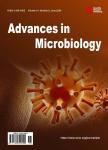Extracellular DNA Plays an Important Structural Role in the Biofilm of the Plastic Degrading Actinomycete <i>Rhodo-coccus ruber</i>
Extracellular DNA Plays an Important Structural Role in the Biofilm of the Plastic Degrading Actinomycete <i>Rhodo-coccus ruber</i>作者机构:Department of Biotechnology Engineering Ben-Gurion University of the Negev Beer-Sheva Israel
出 版 物:《Advances in Microbiology》 (微生物学(英文))
年 卷 期:2013年第3卷第8期
页 面:543-551页
学科分类:1002[医学-临床医学] 100214[医学-肿瘤学] 10[医学]
主 题:Biofilm Extracellular DNA DNase RNase RAPD-PCR
摘 要:Biofilms, the preferred bacterial mode of living and survival, are employed by most microorganisms—which tend to attach to surfaces—to gain physical support, increase nutrient utilization and availability, and augment their resistance against anti-bacterial agents. Rhodococcus ruber (C208) has been shown to form a dense biofilm on polyethylene surfaces while degrading them. Bacterial biofilms comprise bacterial cells embedded in self-secreted extracellular polymeric substances (EPS) whose main components are polysaccharides, proteins and nucleic acids. Revealing the roles of these components will enable further insight into biofilm development and, therefore, the EPS structure-function relationship. The current study focuses on contribution of extracellular DNA to biofilm formation and stability. This was approached by investigating the influence of nucleases on biofilm formation via degradation of their corresponding substrates within the biofilm of C208. RNase application to cultures of C208 decreased biofilm formation. Degradation of biofilm DNA by DNase reduced early-stage biofilm formation by 20% -25% but had no significant effect on established, mature biofilm. Likewise, the addition of DNA to cultures significantly enhanced early-stage biofilm formation by 50% -100%. RAPD-PCR analysis revealed different band patterns from intra-cellular DNA and extra-cellular DNA and also between the supernatant and biofilm fractions of extra-cellular DNA, indicating that perhaps only certain DNA molecules are utilized as part of the biofilm.



